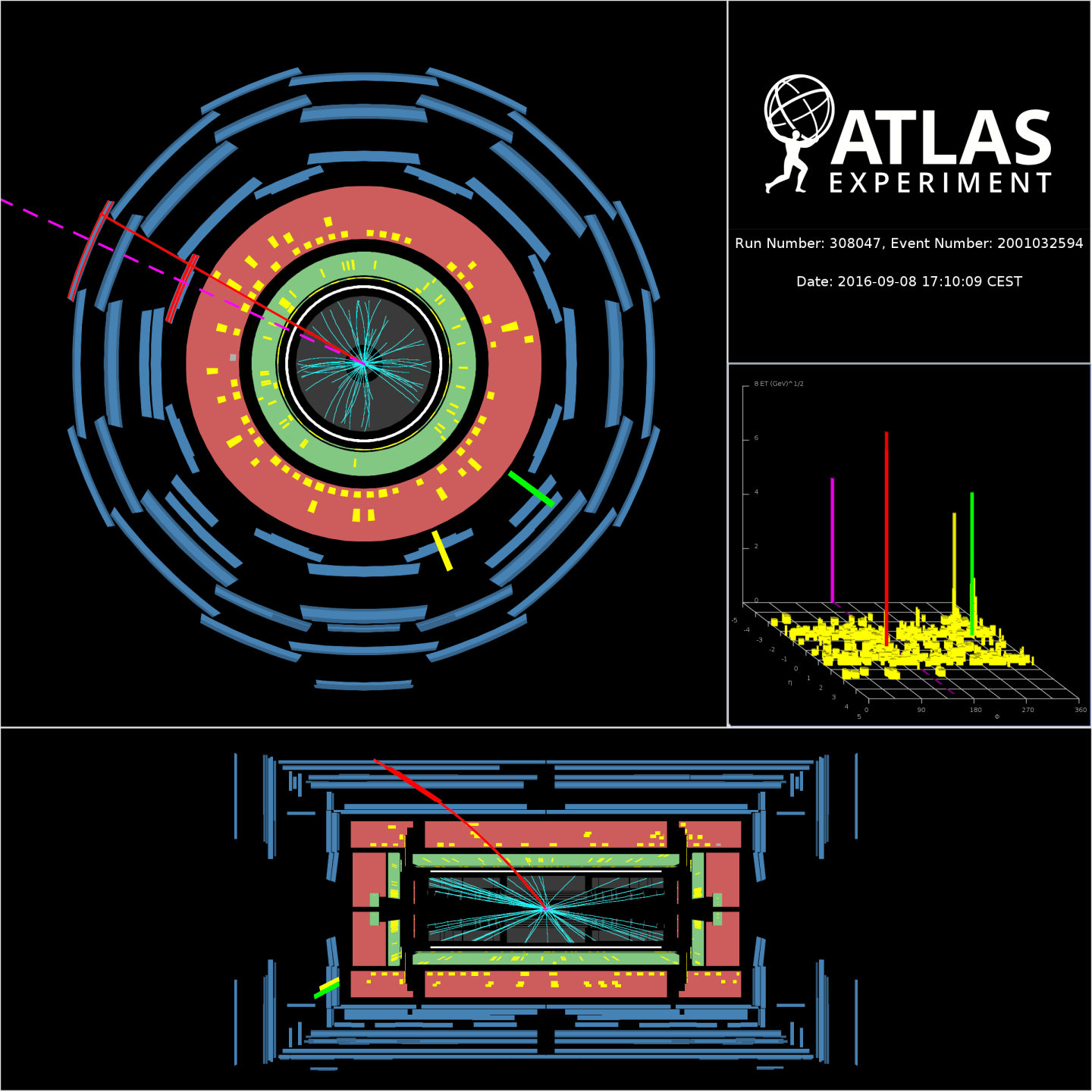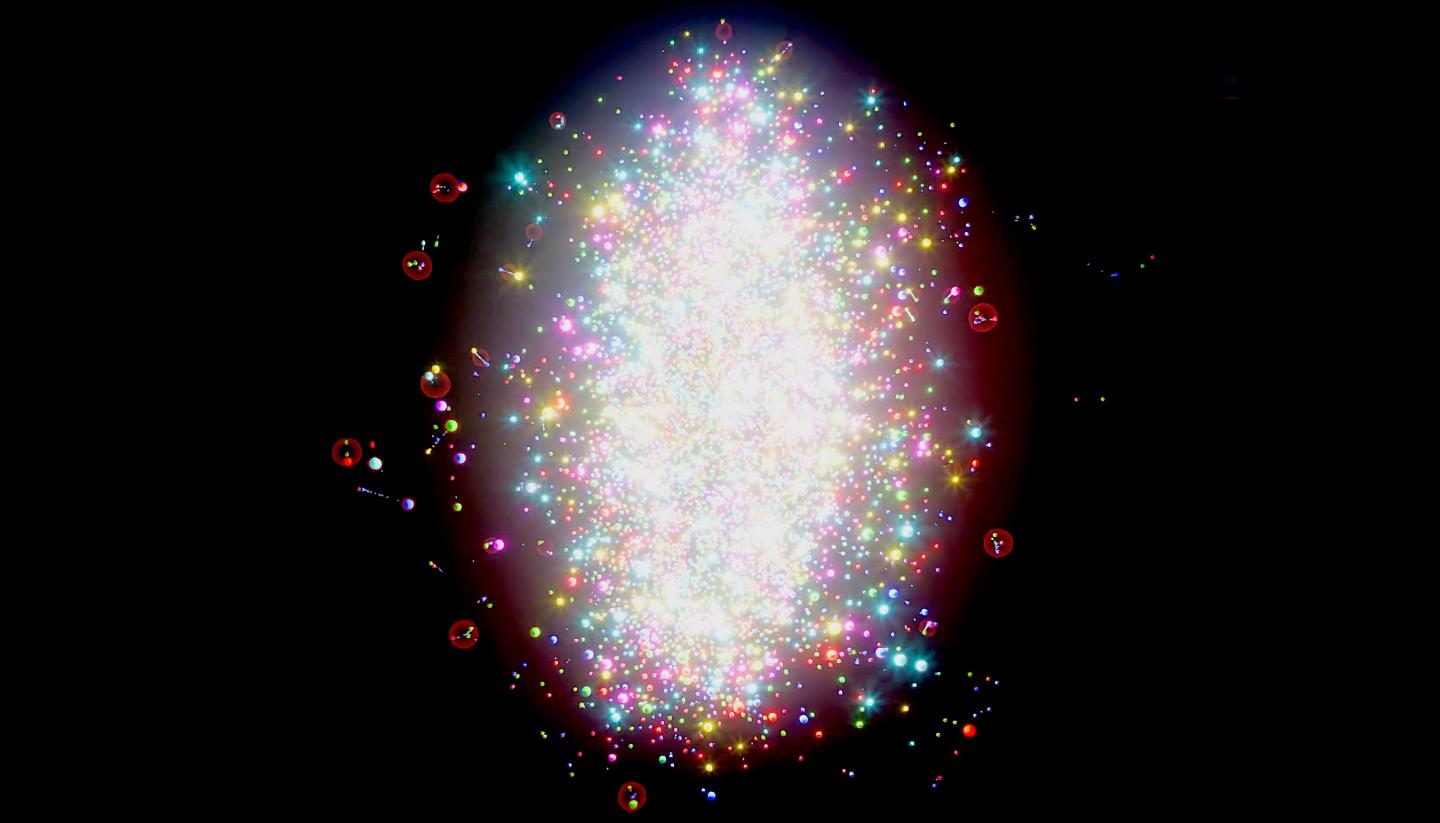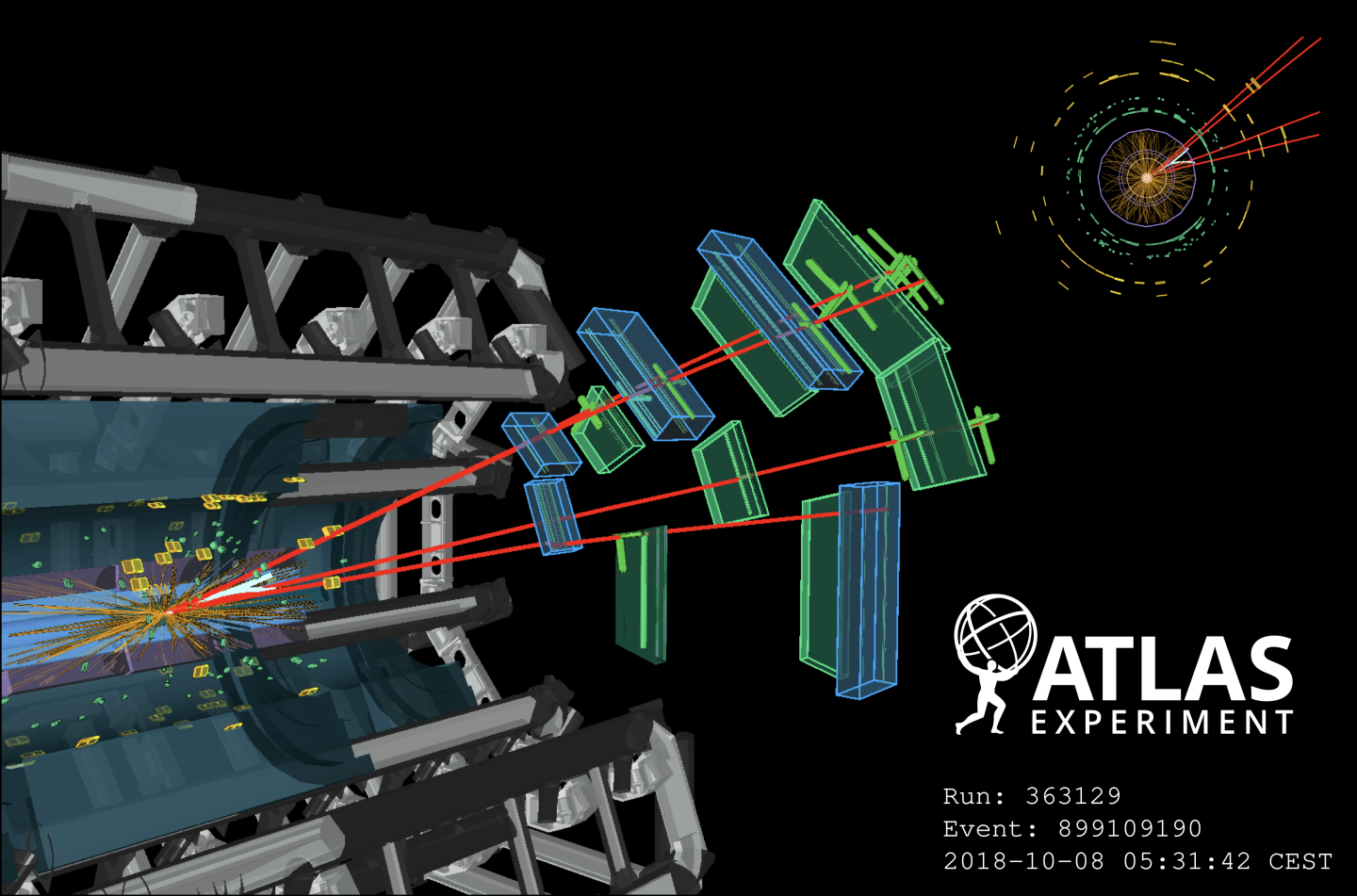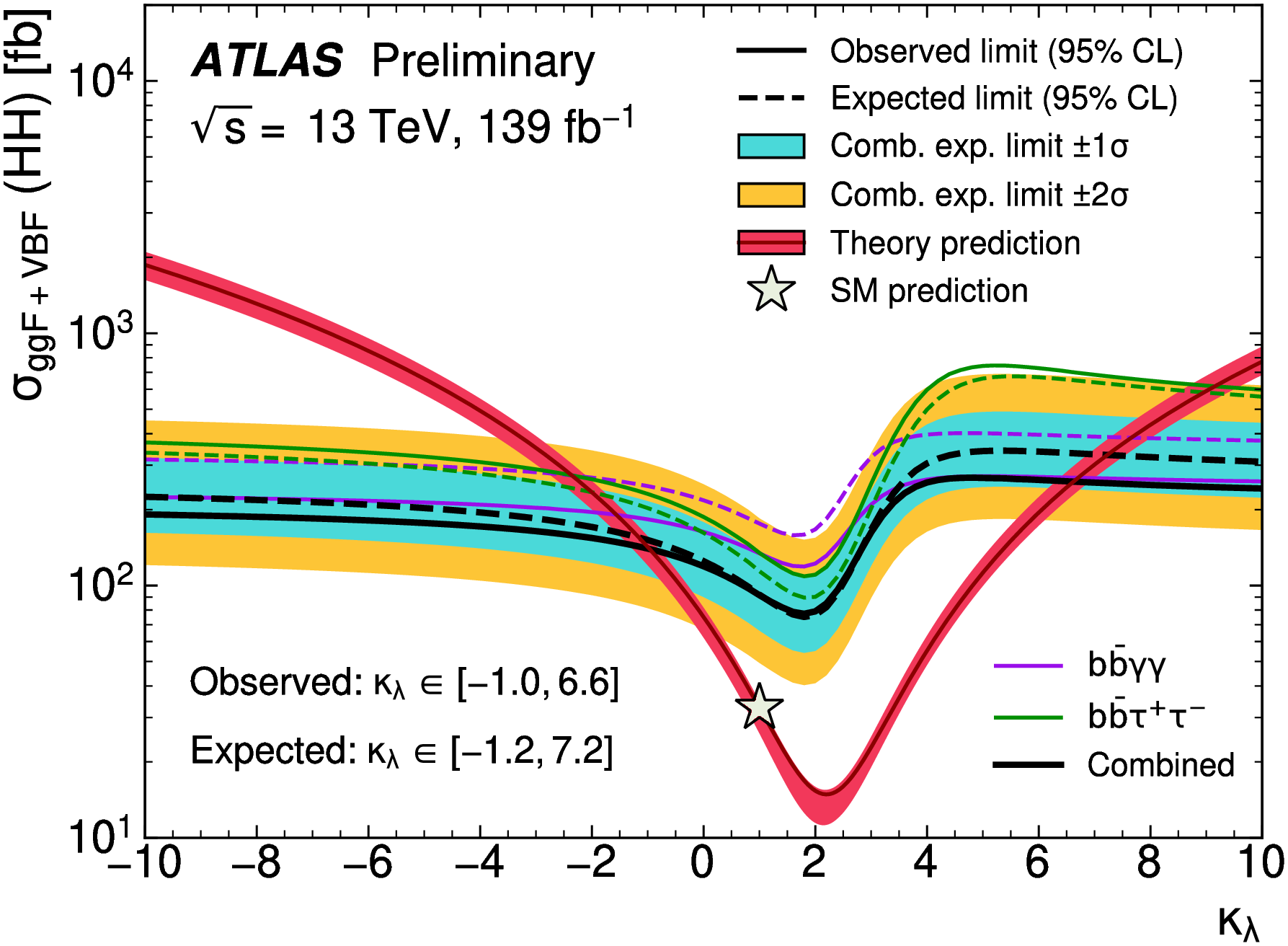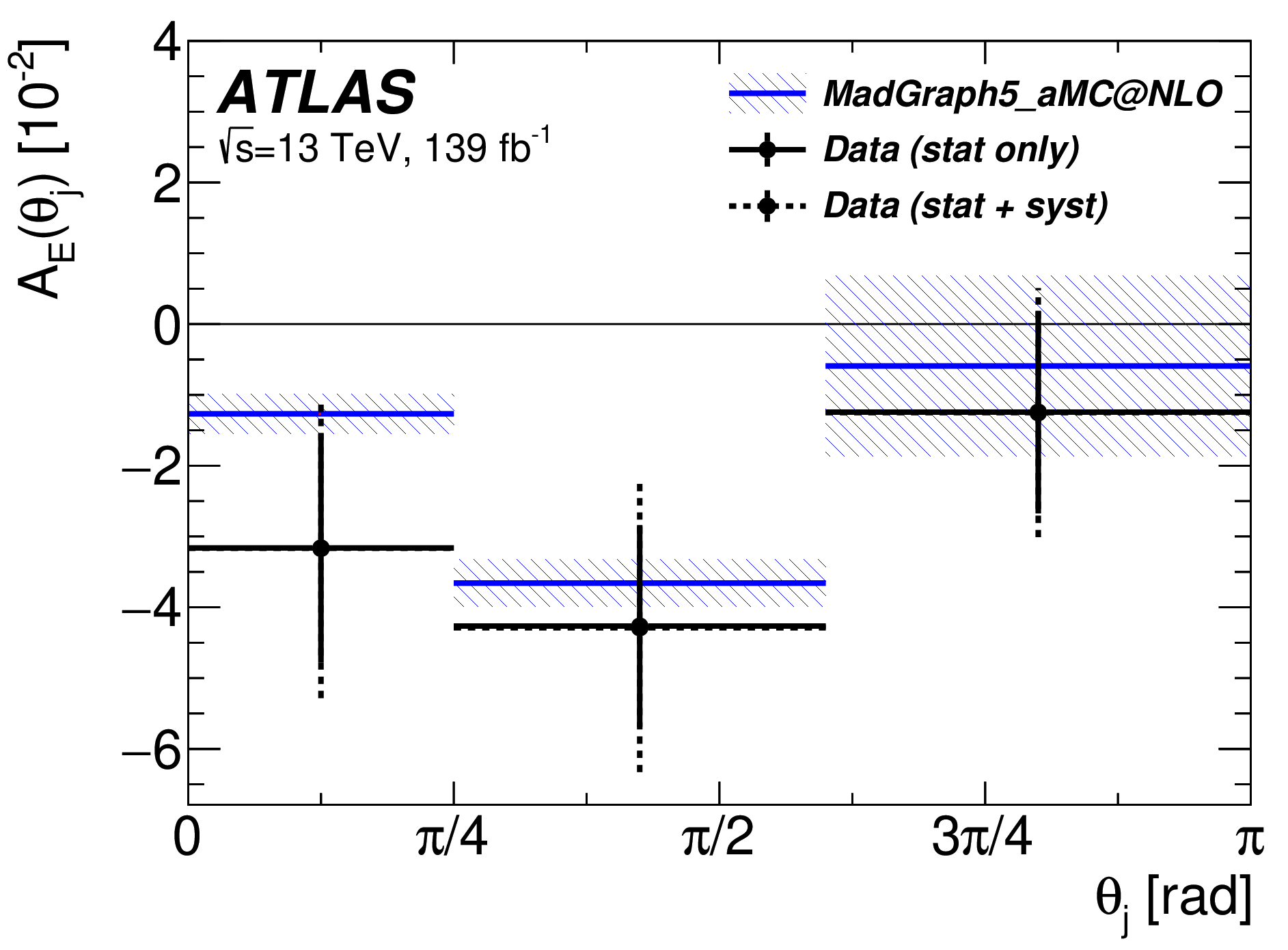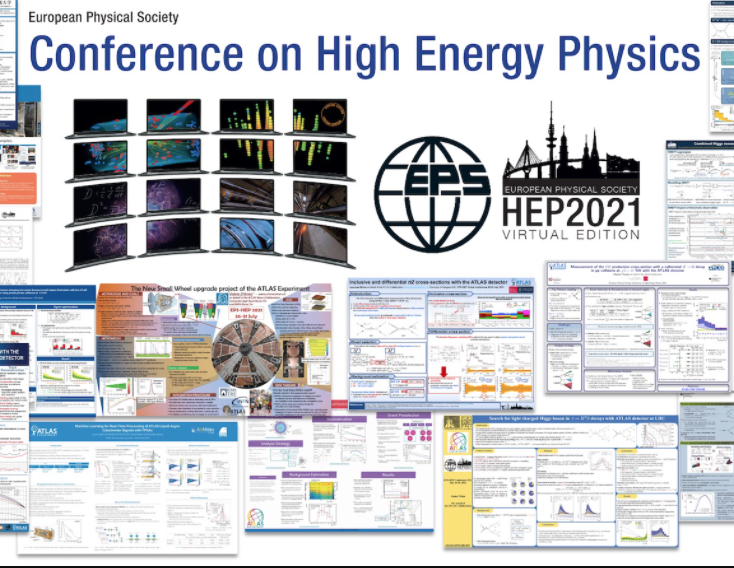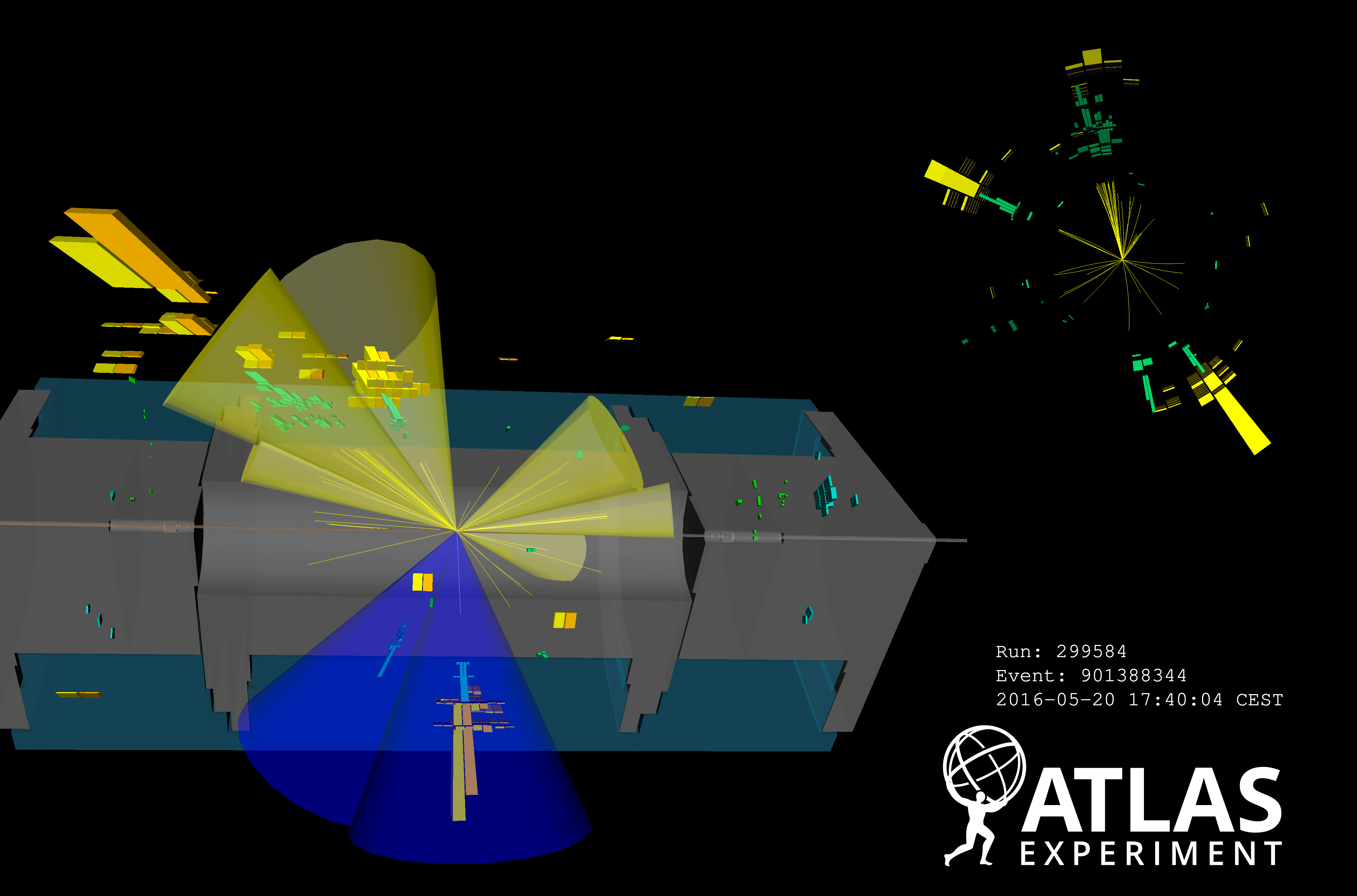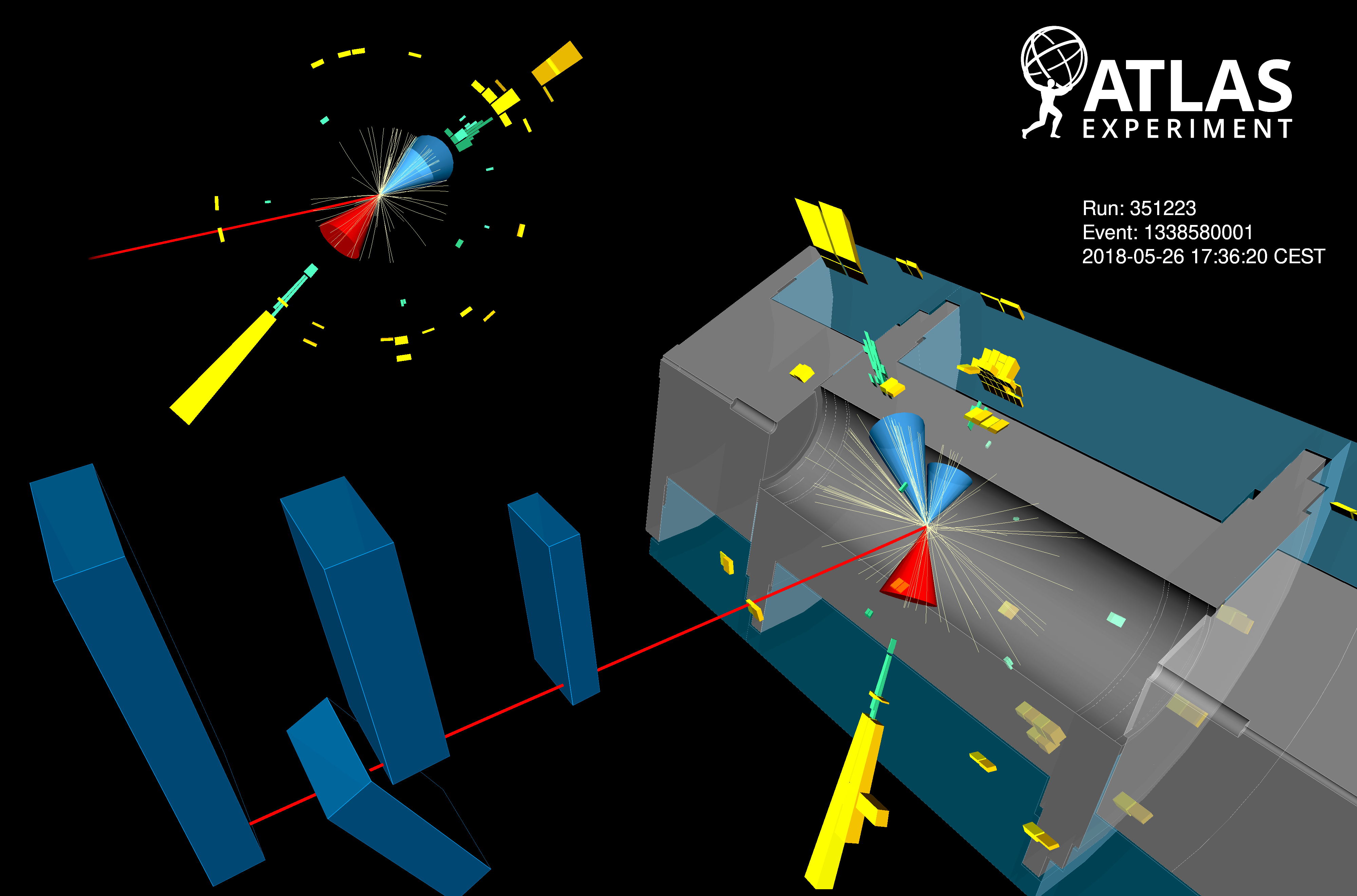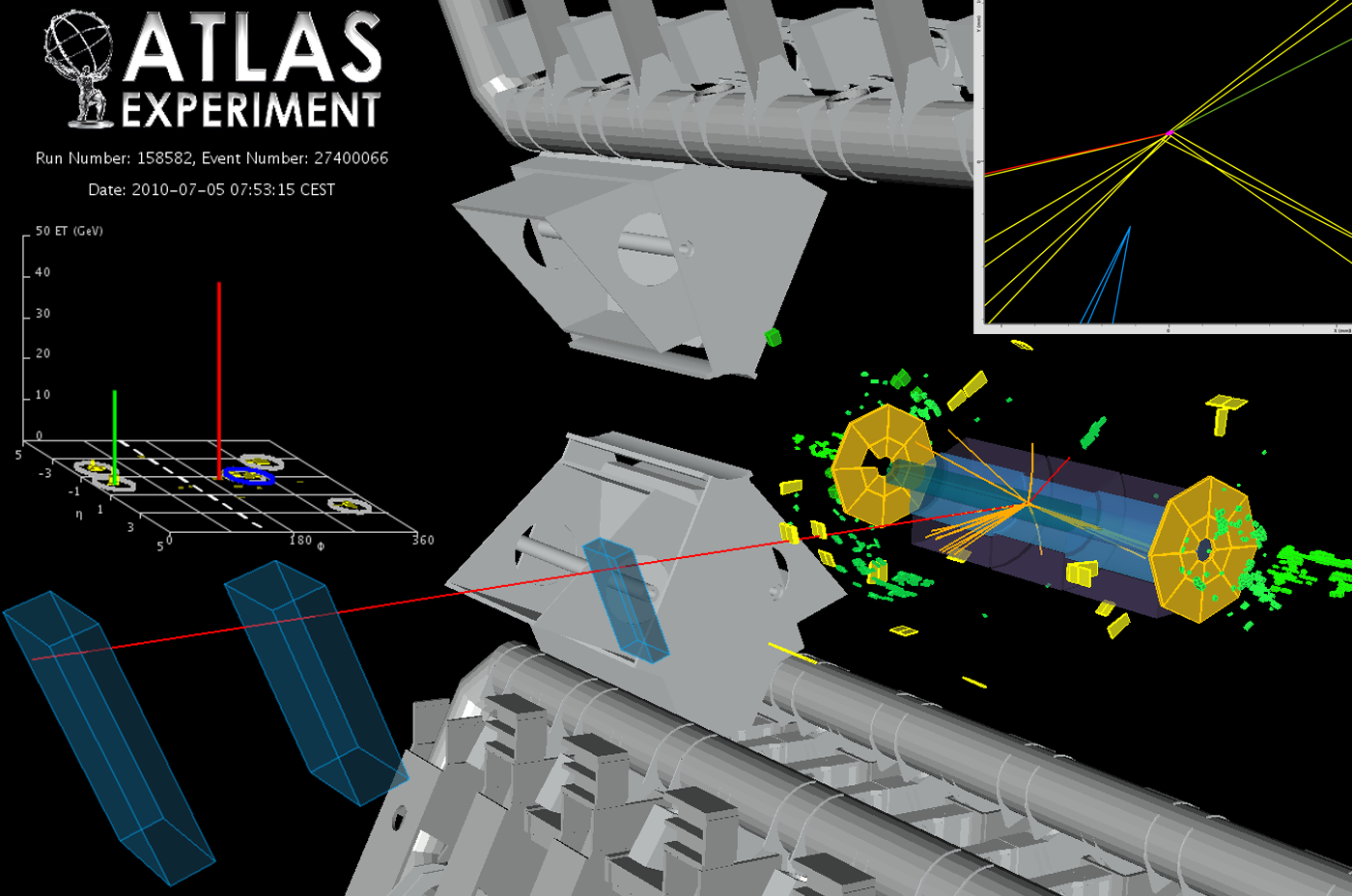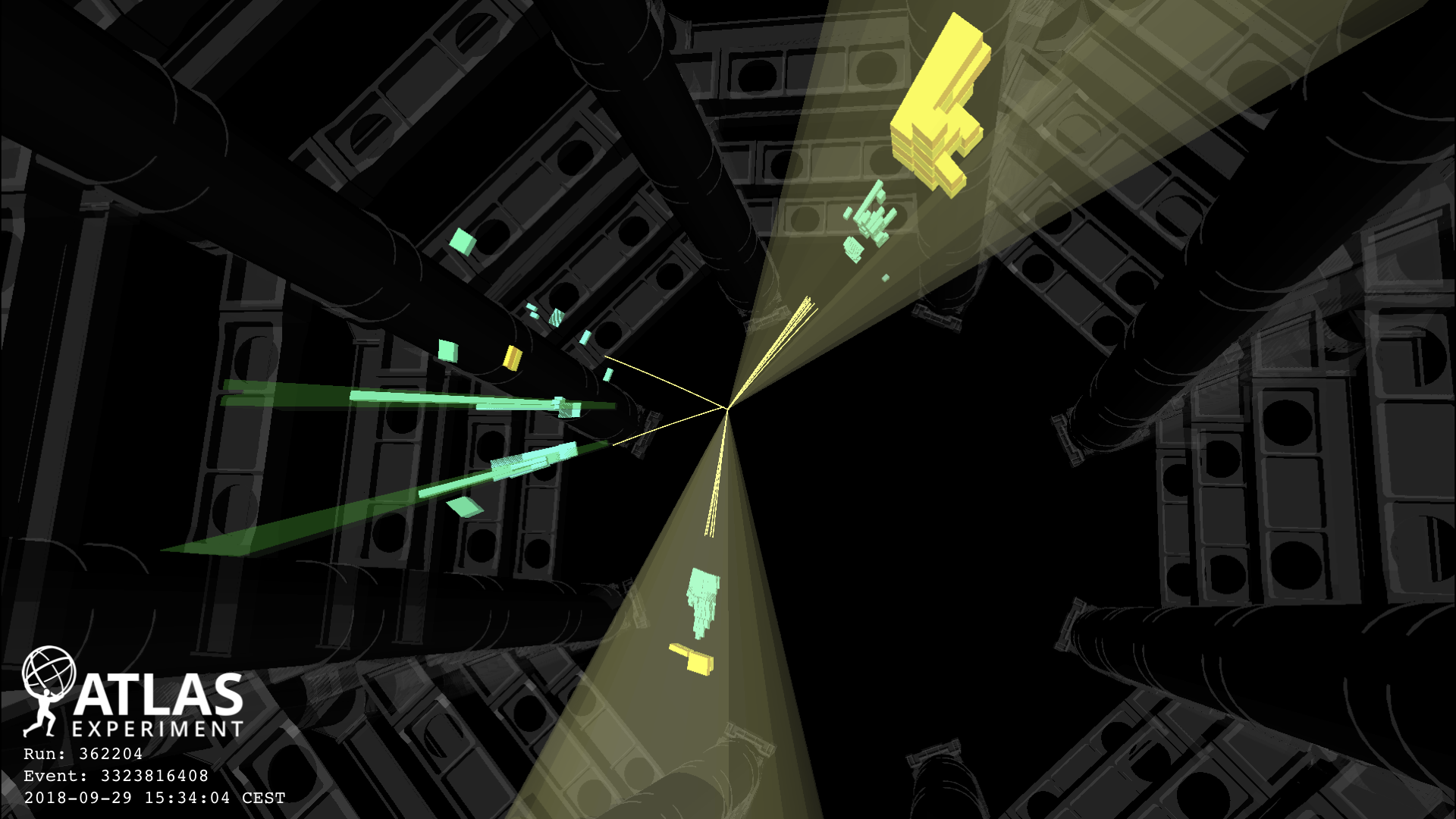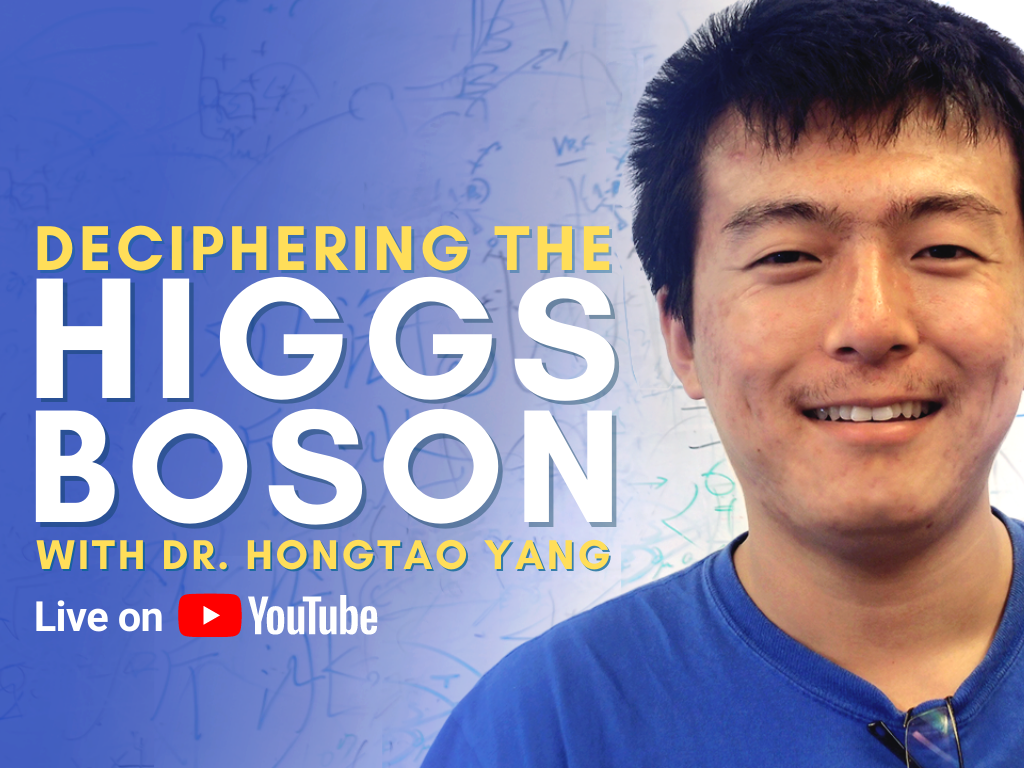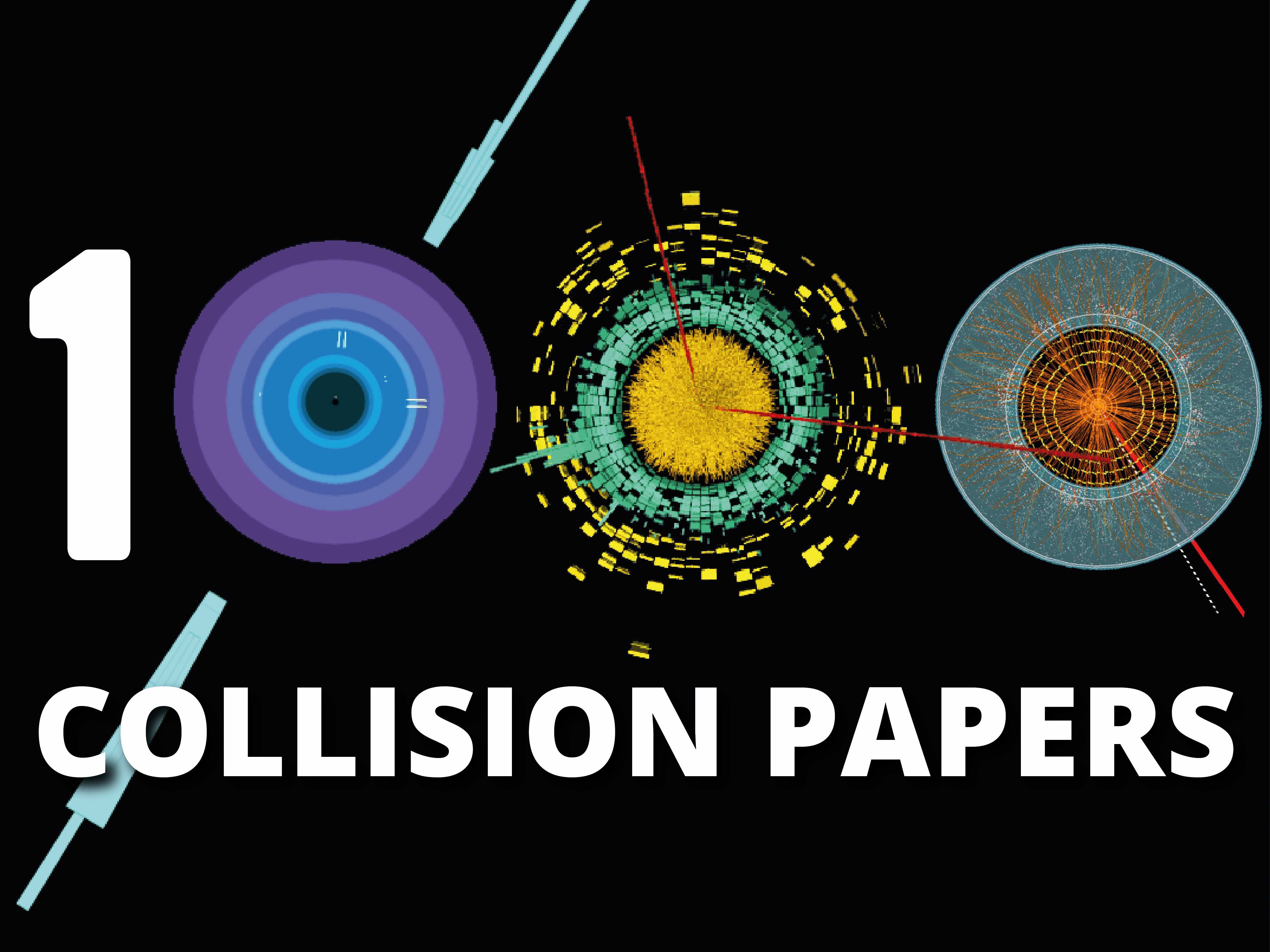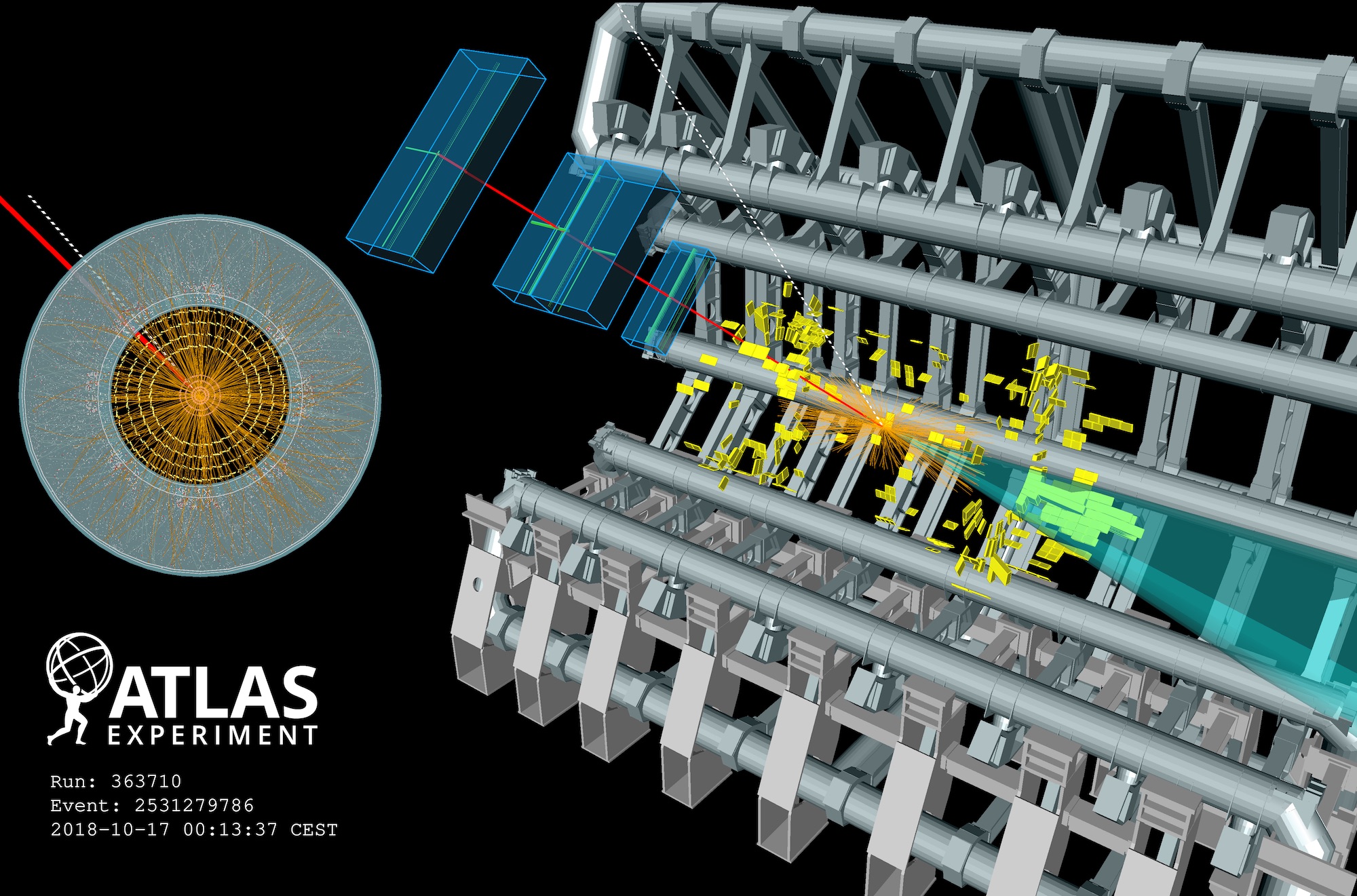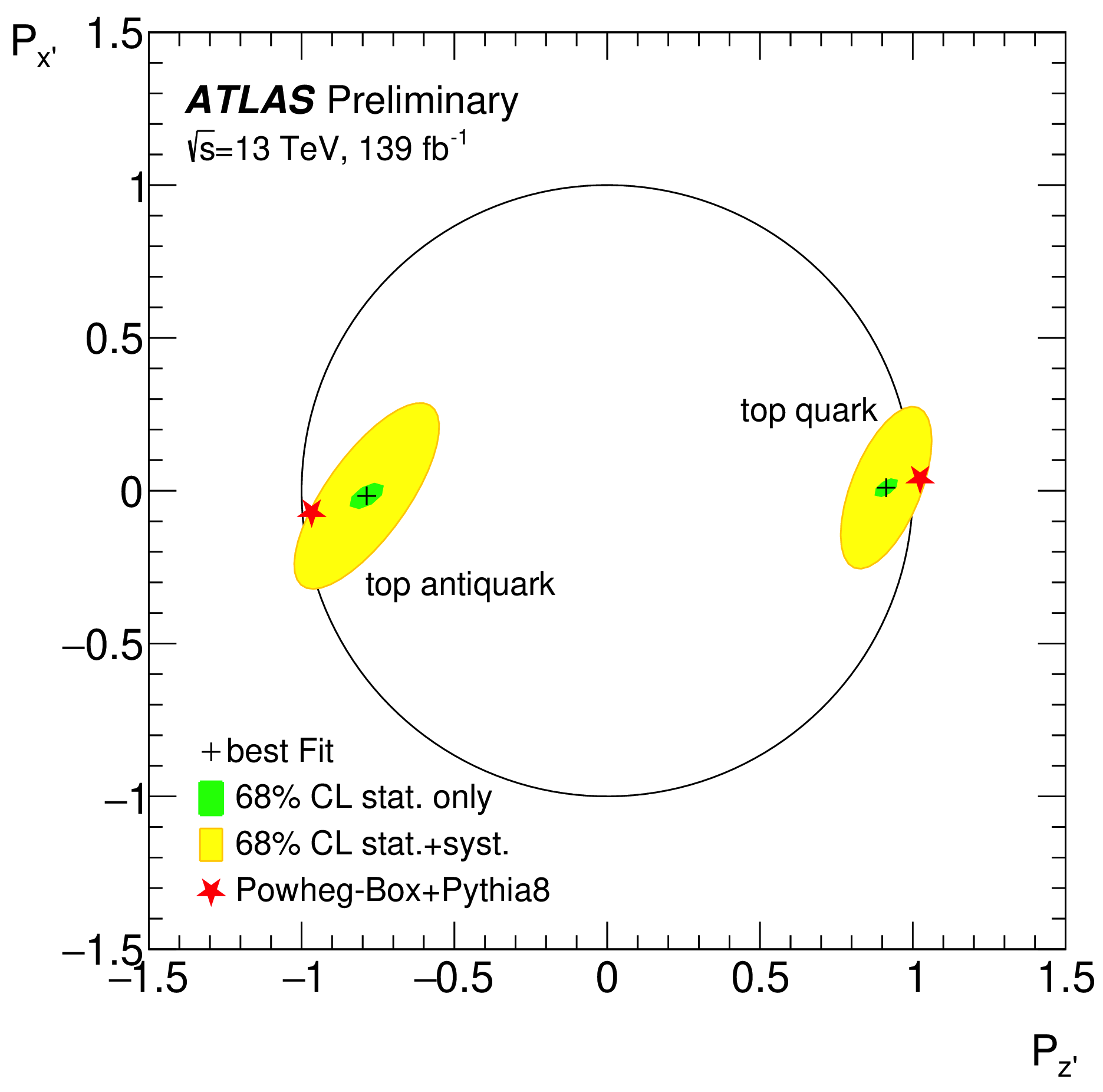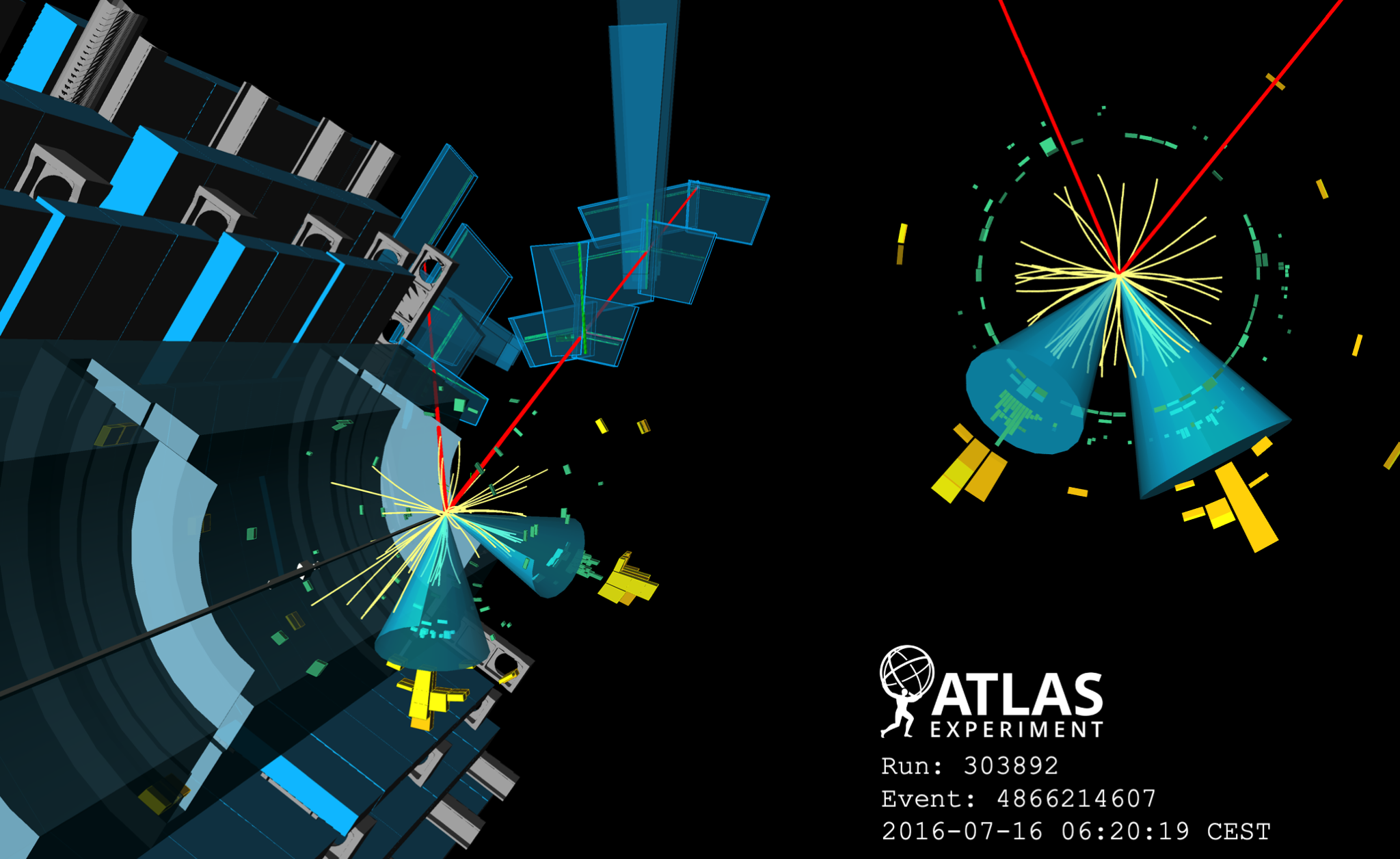Search for elusive “di-Higgs production” reaches new milestone
According to the Standard Model, the Higgs boson can interact with itself, resulting in the simultaneous production of two Higgs bosons ("di-Higgs production"). In a new result, the ATLAS Collaboration combines three di-Higgs decay channels to reach the best limits yet on di-Higgs production.
ATLAS Live talk: Building the Data Haystack with Dr Heather Russell
On 22 November 2021 at 8pm CET, Dr. Heather Russell will give a live public talk on the ATLAS Youtube Channel on the "trigger", the ATLAS event selection system.
News |
Detectors for a new era of ATLAS physics
4 November 2021, Geneva. The ATLAS Experiment at CERN welcomes a brand-new detector: the Muon New Small Wheel system. Its successful installation follows nearly a decade of design and construction, and marks a major milestone in ATLAS’ high-luminosity era.
News |
Teaching established software new tricks
Following several years of development, ATLAS Collaboration has launched a new "multithreaded" release of its analysis software, Athena.
Bringing new life to ATLAS data
The ATLAS Collaboration is breathing new life into its LHC Run-2 dataset, recorded from 2015 to 2018. Physicists will be reprocessing the entire dataset – nearly 18 PB of collision data – using an updated version of the ATLAS offline analysis software (Athena). Not only will this improve ATLAS physics measurements and searches, it will also position the Collaboration well for the upcoming challenges of Run 3 and beyond.
News |
ATLAS pushes forward the search for a charged Higgs boson
ATLAS physicists Florencia Daneri and Waleed Ahmed share the latest news from the Charge-Higgs@LHC workshop, which took place online August 30-31, 2021.
Blog |
ATLAS Live talk: Studying the top quark at the LHC with Dr Maria Moreno Llácer
On 23 September 2021 at 8pm CEST, Dr. Maria Moreno Llácer will give a live public talk on the ATLAS Youtube Channel on the top quark. She will explain what makes this quark such a unique particle and describe the role it plays in the search for new physics.
News |
Searching for new physics using asymmetric top-quark events
Finding the differences between these types of matter – while extremely challenging – could reveal well-hidden effects that hint at the existence of new particles and interactions. In a new result presented at the TOP 2021 conference, the ATLAS Collaboration probed the heaviest-known elementary particle, the top quark, in search of these effects.
ATLAS highlights from the EPS-HEP 2021 conference
ATLAS’ vibrant physics programme was on full display at EPS-HEP 2021, with members presenting 26 new physics analyses among other key recent results. These were shown in 63 presentations and 45 posters over the five days.
News |
Hunting for forbidden decays of the Z boson
In a new study, the ATLAS Collaboration looked for Z bosons decaying into an electron and an anti-muon, or into a muon and a positron.
ATLAS measures key Higgs boson interaction with high precision
The ATLAS Collaboration releases new measurements of the Higgs-boson decay to tau leptons. The result provides new insight into the “Yukawa coupling”, a key interaction of the Higgs boson.
Two Higgs bosons are better than one
One of the long-term goals of the LHC is to measure the Higgs-boson self-coupling, which in turn can give us clues about the formation of the early Universe. This self-coupling can only be measured directly by studying the production of pairs of Higgs bosons (HH).
Probing new physics with pairs of Higgs bosons
The ATLAS Collaboration has released a new result searching for pairs of Higgs bosons (HH) produced by new particles. The Higgs bosons would then each decay into pairs of bottom (b) quarks – known as the '4b decay channel'.
ATLAS reports first observation of WWW production
The ATLAS Collaboration announces the first observation of “WWW production”: the simultaneous creation of three massive W bosons in high-energy LHC collisions.
Summary of new ATLAS results from EPS-HEP 2021
The European Physical Society Conference on High Energy Physics (EPS-HEP 2021) kicks off today. Explore the ATLAS results that will be presented.
News |
The Last Quark
Twenty-five years on from the discovery of the top quark, ATLAS physicist Richard Hawkings discusses the history of the particle's discovery, its place in the Standard Model and what it has still yet to tell us.
Feature |
Shining light on the strong interaction: ATLAS measures photon pair production
What can particles of light – photons – tell us about the inner workings of the Standard Model? A new paper from the ATLAS Collaboration measures pairs of photons to improve the understanding of a fundamental force of Nature – the strong force – and thus scrutinise the theoretical models that underpin high-energy physics research.
Live from the ATLAS experiment
In celebration of the lowering of the first New Small Wheel detector, CERN is hosting a 360° live event from the ATLAS cavern! Tune in on Thursday 15 July at 5pm CEST.
News |
Studying “Little Bangs”: exotic collisions probe the size of quark-gluon plasma
A new result from the ATLAS Collaboration studies the interactions of photons – particles of light – with lead nuclei at the Large Hadron Collider (LHC). Using new data collection techniques, physicists revealed an unexpected similarity to the experimental signatures of the quark–gluon plasma.
ATLAS Live talk: Deciphering the Higgs boson with Dr Hongtao Yang
On 1 July 2021, Dr. Hongtao Yang will be giving a live public talk, sharing the story of the Higgs boson's discovery by the ATLAS and CMS experiments. He will explain what ATLAS physicists have learned about this fascinating particle so far, and describe the next steps in its exploration.
News |
ATLAS celebrates results of 1000 collision papers
The ATLAS Collaboration celebrates the creativity, wealth and scientific impact enshrined in its 1000 papers using LHC collision data. This work – together with that carried out by its sister experiments at the LHC – represents a diversified physics programme that is unprecedented and unequalled in physics research to date.
News |
The hunt for higgsinos reaches new limits
The ATLAS Collaboration has released three new searches for "higgsinos" - the super-partner of the Higgs boson.
Heavyweight champions: a search for new heavy W’ bosons with the ATLAS detector
A new search from the ATLAS Collaboration, released this week at the Large Hadron Collider Physics conference (LHCP 2021), sets limits on the mass of the W’ boson.
ATLAS measures the polarisation of top quarks and antiquarks
In a new result presented by the ATLAS Collaboration, physicists have measured – for the first time – the full polarisation vectors for both top quarks and antiquarks.
New search for charming decay of the Higgs boson
At the LHCP2021 conference, the ATLAS Collaboration presents a new direct search for the decay of the Higgs boson to charm quarks. Observing this decay would give physicists new insight into the Higgs boson’s relationship with the second generation of matter particles.


